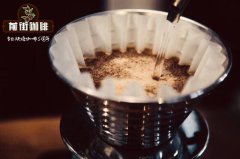Is Colombian Coffee beans or varieties Colombian Coffee Natural conditions win at the starting line

Professional coffee knowledge exchange more coffee bean information please follow the coffee workshop (Wechat official account cafe_style)
Front Street-introduction to Columbian Coffee
Colombia is located in northwestern South America, bordering Venezuela and Brazil to the east, Ecuador and Peru to the south, Panama to the northwest, the Caribbean Sea to the north and the Pacific Ocean to the west. The land area is about 1.142 million square kilometers, ranking fourth in South America. Colombia is the only country in South America that has the coastlines of the North Pacific and the Caribbean.
Colombia is the world's second largest exporter of coffee, accounting for about 15% of global production. Most of its coffee trees are grown in three mountains stretching north and south, with only Arabica species. Although its output ranking is lower than that of Brazil, the coffee beans are of good quality, rich and unique aroma, sweet in acid and moderate bitterness, which is very suitable for single drink or mixture.
South America is already the largest coffee-producing continent, thanks to the high altitude surrounded by the foothills of the Andes, where the mild, humid climate and good rainfall make it very suitable for coffee growth, making Colombian coffee rich in flavor and excellent in quality. some have strong chocolate and nutty aromas; others have a jam-like sweet taste. Roasted coffee beans will release a sweet fragrance, with sweet in the acid, bitter in the flat quality characteristics, the concentration is appropriate, different from the strong Brazilian coffee, is a sweet and light fragrance, low-key and elegant.
According to its geographical location, it is divided into three producing areas: northern, central and southern, in which there are six high-quality coffee producing areas in Colombia, Sierra Nevada,Santander,Cauca,Huila,Narino and Paisaje cultural cafetero. Colombia is the only country in South America that has both the Pacific coast and the Caribbean coast, and the best producing areas in Colombia are almost all volcanic soil. Speaking of volcanoes, we have to mention the two highest quality coffee producing areas in Colombia, Huila (Whelan) and Narino (Nanio) in the south, which have two of Colombia's famous volcanoes, Whelan (Nevado del Huila) and Nevado delGalers (Nanio).
Volcanic ash is rich in minerals and can make the soil more fertile. Huilan Province was able to produce "SCAA coffee beans of the year" in 2009 and 2010, thanks in part to the new replenishment of volcanic ash to the soil.
Knowledge: the establishment of the Colombian National Cafe Federation (FNC, a large non-governmental organization) in 1927 greatly promoted the development of the national coffee industry, providing a variety of services and support to coffee producers in the country.
In short: Qianjie is a coffee research hall, happy to share the knowledge about coffee with you, we share unreservedly just to make more friends fall in love with coffee, and there will be three low-discount coffee activities every month. The reason is that Qianjie wants to make more friends drink the best coffee at the lowest price, which has been Qianjie's tenet for 6 years!
END
Important Notice :
前街咖啡 FrontStreet Coffee has moved to new addredd:
FrontStreet Coffee Address: 315,Donghua East Road,GuangZhou
Tel:020 38364473
- Prev

Ethiopia Yega Fichelma Salesamie treats people like rose peach essential oil
Professional coffee knowledge exchange more coffee bean information please follow the coffee workshop (Wechat official account cafe_style) front street-Yega Xuefei Kochel Martha Reza introduction 2018 Nordic attack began to try honey-treated coffee in Ethiopia. This is an experimental batch of Israel Degfa, the owner of the processing plant! Israel Deg, the owner of the processing station
- Next

Favorable conditions for growing coffee in Colombia Coffee beans are sour and sweet
Professional coffee knowledge exchange more coffee bean information please follow Coffee Workshop (Wechat official account cafe_style) Front Street-Columbian Coffee introduction Columbia Coffee (Cafe de Colombia) is produced in Colombia and is one of the few individual coffees sold in the world under the name of the country. In terms of quality, it has won praise unmatched by other coffee. With other producing countries
Related
- Beginners will see the "Coffee pull flower" guide!
- What is the difference between ice blog purified milk and ordinary milk coffee?
- Why is the Philippines the largest producer of crops in Liberia?
- For coffee extraction, should the fine powder be retained?
- How does extracted espresso fill pressed powder? How much strength does it take to press the powder?
- How to make jasmine cold extract coffee? Is the jasmine + latte good?
- Will this little toy really make the coffee taste better? How does Lily Drip affect coffee extraction?
- Will the action of slapping the filter cup also affect coffee extraction?
- What's the difference between powder-to-water ratio and powder-to-liquid ratio?
- What is the Ethiopian local species? What does it have to do with Heirloom native species?

